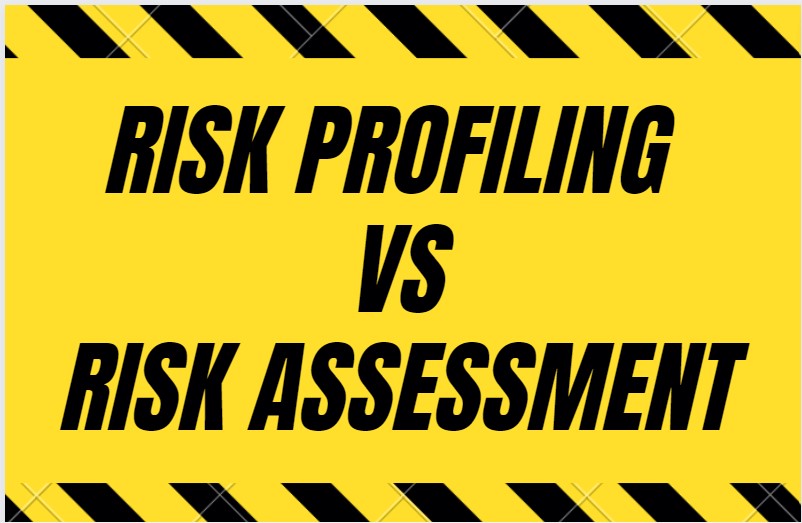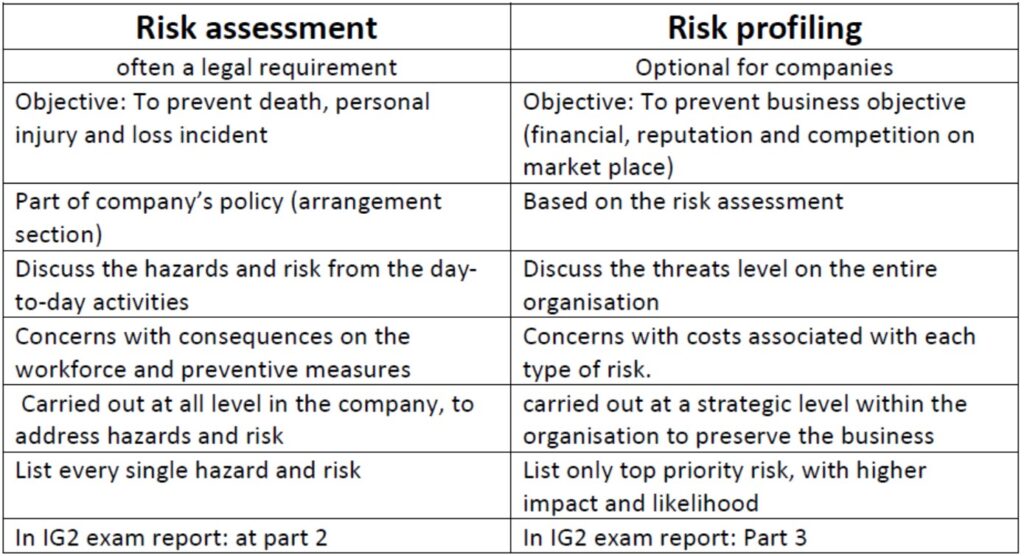
By, Hammam Elmahi
Introduction
One of the main topics for all health and safety practitioners is the risk assessment, it is generally the core work of occupational safety and health because it is the document that covers all hazards and risks associated with the tasks and activities going on in a workplace.
The occupational health and safety policy consists of three parts: statement of intent, organisations and the arrangement. The statement of intent includes the commitment and declaration of the management toward occupational safety and health, the organization part covers the roles and responsibilities of the workforce from top to bottom, the last part, arrangement, include many topics that answer the question of how are we going to manage and control the risks at the workplace, including the risk assessment.
This essay will discuss risk profiling and risk assessment in detail, and examine the differences and similarities between them.
Risk profiling:
Actually, Risk profiling is a part of a company’s business risk associated with health and safety. In another word, we use risk profiling to calculate the top priority health and safety risks that have damaging consequences on the entire organisation. For example, if we are in a construction company, where we use scaffolding, the top priority hazard here is obviously, working at height, which will have a greater threat to the business, because the consequences of falling from height is generally a fatality, and that have a high effect on the business, because of investigation time, fine, compensation, loosing on reputation, good well and business.
All of that is a part of the threat to the entire business along with financial threats and economical risks, so a way of addressing health and safety threats to the business is to take the main hazards and risks from the risk assessment document and prioritise them according to probability and impact of the business and add the controls that can eliminate or reduce them as much as reasonably practicable.
Risk Assessment:
The risk assessment is a process of evaluating the workplace to address the hazard and risk that can cause harm, injury or damage, then evaluate the existing control, and decide on further control if required. Based on the ILO convection C155, the employer has to provide a safe place of work and safe plant and equipment, the risk assessment will help an employer to comply with these requirements. So, we can say that having a sufficient and completed risk assessment is a legal requirement.
Unconsciously, we all carry out a risk assessment in our daily life. For example, when we use a knife to cut fruits, cross the road or ride a bicycle on the pavement, we assess risks and hazards trying to avoid unsafe acts and unsafe conditions which can lead to accidents.
The risk assessment document is a table including columns to identify the hazards, identify people who might be at harm and how, existing control, additional control, the responsible person, duration and risk rating before and after implementing the additional control. It is a live document; we must update it a least once a year.

Conclusion
The difference between the risk assessment and risk profiling is about the goal and objective of each one, the goal of risk profiling is to preserve the business from threats that stem from occupational safety and health, as in the consequences of a worker death is catastrophic to the entire business. However, the risk assessment is a critical document to identify the hazards and decide on a viable control measure.
